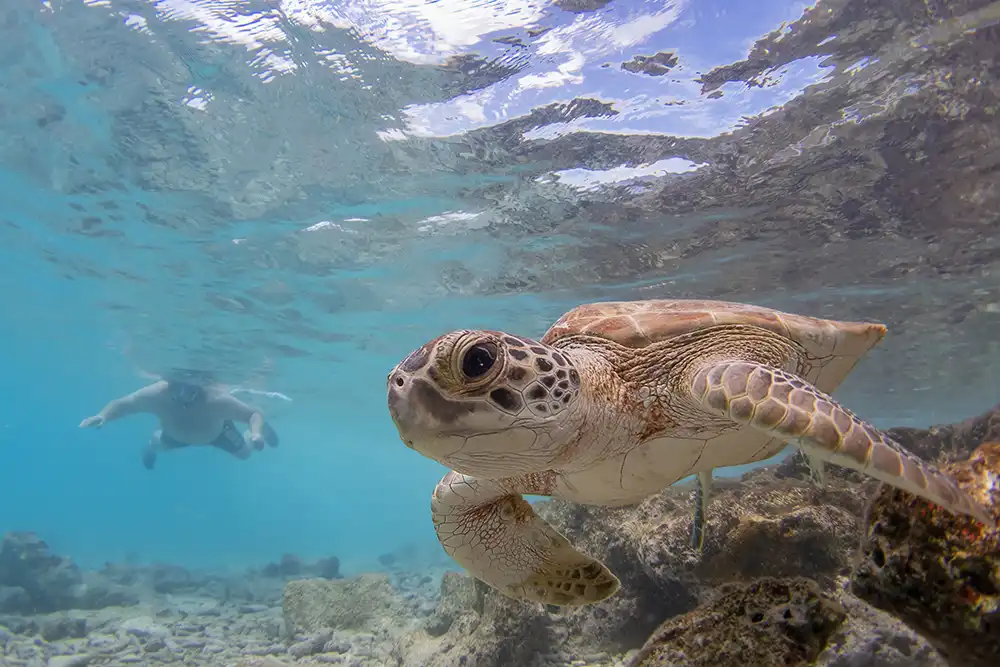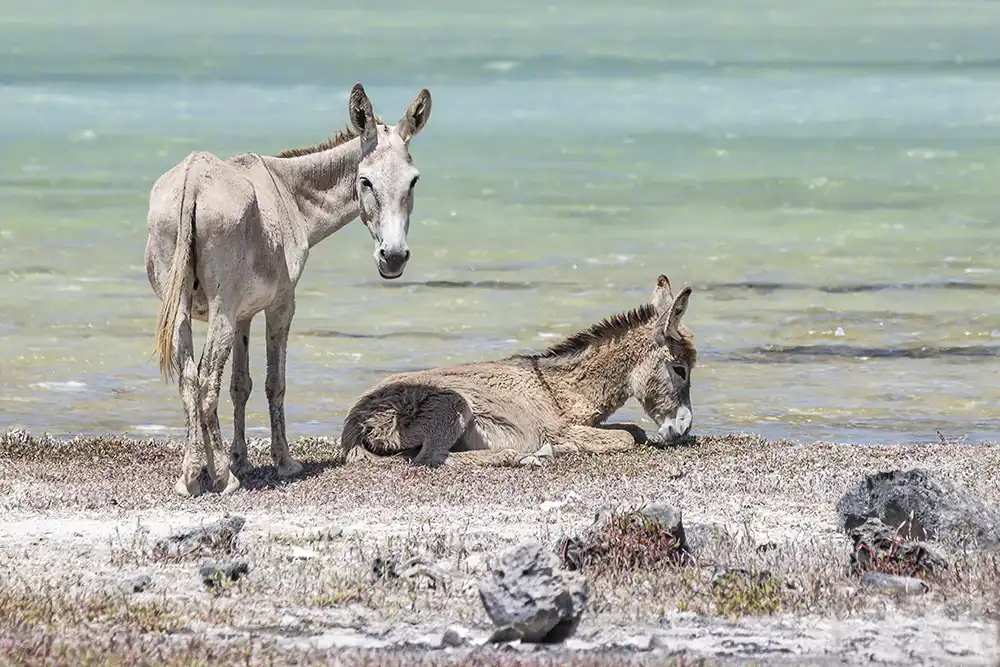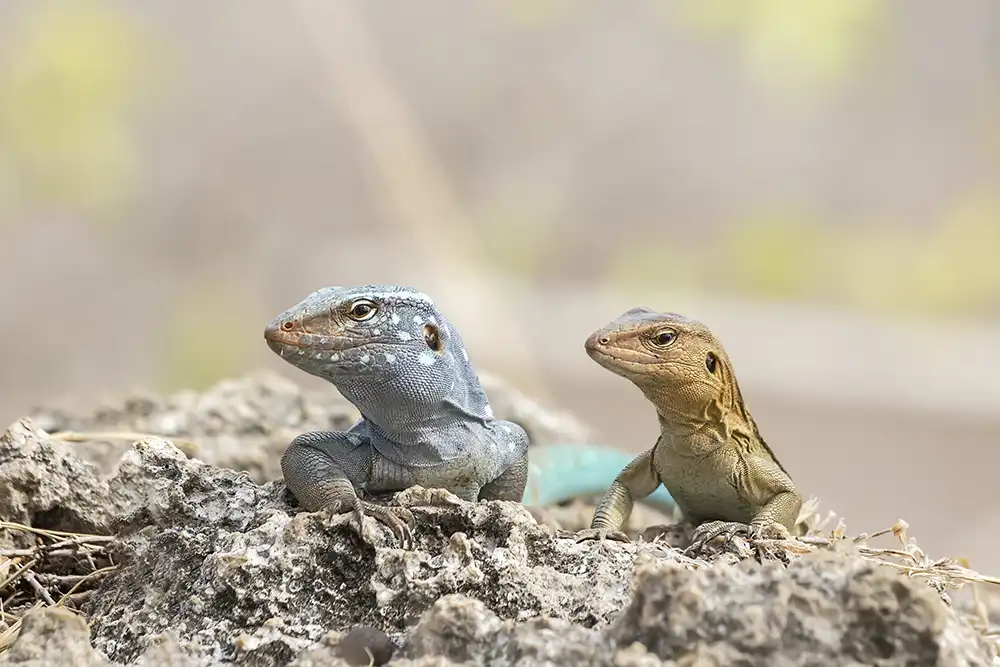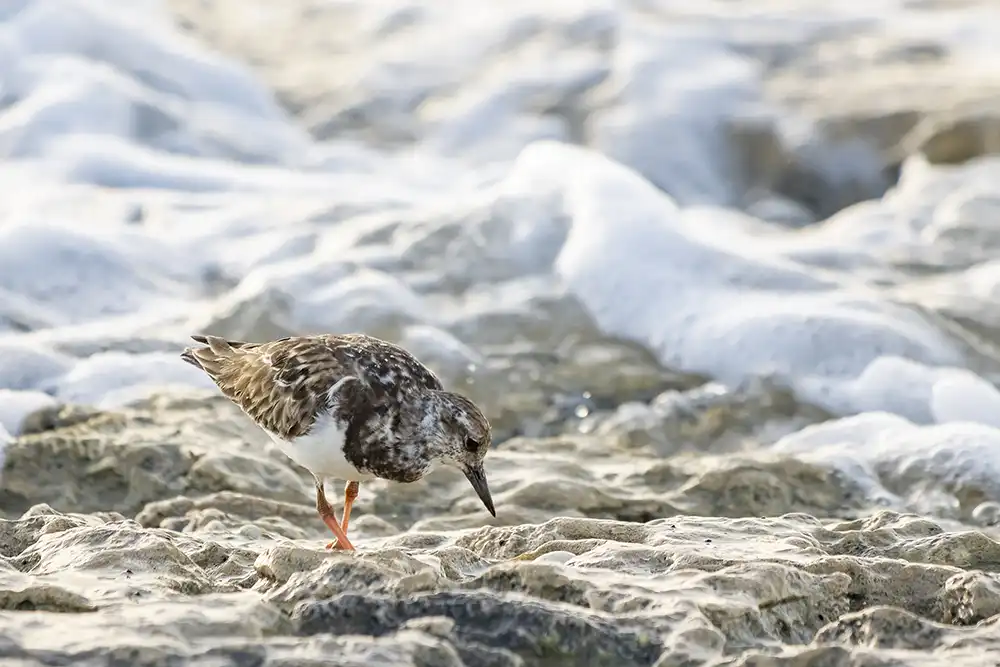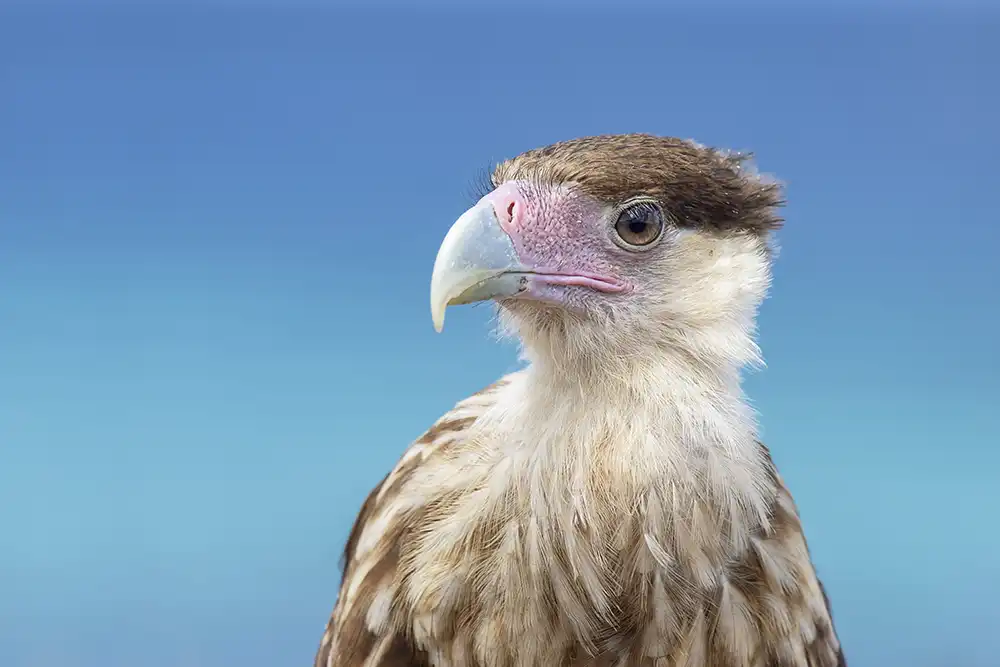
Nature in Bonaire
Bonaire boasts a diverse nature, both above and below the water. We are fascinated by the variety of birds, fish, and reptiles that inhabit the island! On this blog page, you’ll find all the articles we’ve written about the nature in Bonaire.

Sea Turtles on Bonaire
Read our blog about the Sea Turtles on Bonaire and where to find them.
Is seeing a sea turtle also on your wishlist during your vacation in Bonaire? In this richly illustrated blog, you will find out where you have the best chances of encountering a turtle. We also delve into the different types of turtles found in Bonaire, how to best identify these species, and how these magnificent animals are protected.
The wild animals of Bonaire
Read our blog about the wild mammals of Bonaire.
Discover everything about the wild mammals of Bonaire, including:
- The Wild Donkeys
- The Wild Goats
- The Wild Sheep
- The Wild Pigs
- The Wild Cats
- The Mice and Rats
- The Bats
The lizards of Bonaire
Read our blog about all the lizards of Bonaire.
Learn all about the lizards of Bonaire, such as:
- The Whiptail Lizard (Cnemidophorus murinus ruthveni)
- The Green Iguana (Iguana iguana)
- Te Anole (Anolis bonairensis)
- The Spectacled Teju (Gymnophthalmus lineatus)
- The Cosmopolitan House Gecko (Hemidactylus mabouia)
- The Turnip-tailed Gecko (Thecadactylus rapicaudus)
Butterflies on Bonaire
Read our blog about butterflies on Bonaire.
On Bonaire, many colorful butterflies can be admired, such as:
- The Monarch Butterfly (Danaus plexippus)
- The Gulf Fritillary (Agraulis vanillae)
- The Danaid eggfly (Hypolimnas misippus)
- The Cloudless Sulphur (Phoebis sennae)
- The Guayacan Sulphur (Kricogonia lyside)
- The Fiery Skipper (Hylephila phyleus)
- The Hanno Blue (Hemiargus Hanno)
- The Black Witch (Ascalapha odorata)
The mangroves of Bonaire
Read our article about the mangroves of Bonaire.
In this article, you’ll be introduced to the unique world of the mangroves in and around the lagoon of Lac Bay in Bonaire. We explore the three different tree species and discover how they cope with all the salt in their environment. Furthermore, we delve into the importance of mangrove forests. Finally, we take a closer look at the work of the Mangrove Maniacs, the organization that maintains and protects Bonaire’s mangroves.
Our bird blogs
Fly to:
• Birds of Bonaire: The Big Five
• Birds of Bonaire: The Small Five
• Herons and egrets of Bonaire
Colorful Birds of Bonaire
Read our blog about the colorful birds of Bonaire.
In our Colorful Birds Blog, five colorful birds make an appearance. They are:
- The Lora or Yellow-Shouldered Amazon (Amazona barbadensis)
- The Prikichi of Brown-Throated Parakeet (Eupsittula pertinax)
- The Venezuelan Troupial (Icterus icterus)
- The Yellow Oriole (Icterus nigrogularis)
- The Scaly-Naped Pigeon (Patagioenas squamosa)
Big Birds of Bonaire: The Big Five
Read our blog about the five largest birds of Bonaire.
In our Bird Big Five, five magnificent birds make an appearance. They are:
- The Caribbean flamingo (Phoenicopterus ruber)
- The Caracara (Caracara plancus)
- The Osprey (Pandion haliaetus)
- The Brown Pelican (Pelecanus occidentalis)
- The Magnificent Frigatebird (Fregata magnificens)
Small Birds of Bonaire: The Small Five
Read our blog about the five smallest birds of Bonaire.
In our Bird Small Five, five magnificent birds make an appearance. They are:
- The Blue-Tailed Emerald Hummingbird (Chlorostilbon mellisugus)
- The Ruby-Topaz Hummingbird (Chrysolampis mosquitus)
- The Saffron Finch (Sicalis flaveola)
- The American Yellow Warbler (Dendroica petechia)
- The Ground Dove (Columbina passerina)
Garden Birds of Bonaire
Read our blog about the garden birds of Bonaire.
The green and flower-filled gardens of Bonaire attract many birds, such as:
- The Tropical Mockingbird (Mimus gilvus)
- The Bananaquit (Coereba flaveola)
- The Pearly-Eyed Thrasher (Margarops fuscatus)
- The White-Tipped Dove (Leptotila verreauxi)
- The Eared Dove (Zenaida auriculata)
- The Bare-Eyed Pigeon (Columba corensis)
Herons and egrets of Bonaire
Read our blog about the herons of Bonaire.
In the water-rich Bonaire, the herons are never far away, such as:
- The Green Heron (Butorides virescens)
- The Snowy Egret (Egretta thula)
- The Great Egret (Ardea alba)
- The Reddish Egret (Egretta rufescens)
- The Tricolored Heron (Egretta tricolor)
- The Great Blue Heron (Ardea herodias)
- The Yellow-crowned Night-Heron (Nyctanassa violacea)
- The Black-crowned Night-Heron (Nycticorax nycticorax)
Water Birds of Bonaire
Read our blog about the water birds of Bonaire.
On Bonaire, many waterbirds can be admired, such as:
- The Black-Necked Stilt (Himantopus mexicanus)
- The American Oystercatcher (Haematopus palliatus)
- The Whrimbrel (Numenius phaeopus)
- The Ruddy Turnstone (Arenaria interpres)
- The Spotted Sandpiper (Actitis macularius)
- The Semipalmated Plover (Charadrius semipalmatus)
- The Snowy Plover (Charadrius nivosus)
- The Least Sandpiper (Calidris minutilla)
- The Semipalmated Sandpiper (Calidris pusilla)
- The Stilt Sandpiper (Calidris himantopus)
- The Lesser Yellowlegs (Tringa flavipes)
- The Greater Yellowlegs (Tringa melanoleuca)
- The Short-Billed Dowitcher (Limnodromus griseus)
- The Wilson’s Snipe (Gallinago delicata)
Flycatchers of Bonaire
Read our blog about the flycatchers of Bonaire.
Flycatchers are often overlooked on Bonaire. Get to know these charming birds and learn more about:
- The Gray Kingbird (Tyrannus dominicensis)
- The Brown-crested Flycatcher (Myiarchus tyrannulus)
- The Northern Scrub-Flycatcher (Sublegatus arenarum)
- The Caribbean Elaenia (Elaenia martinica)
- The White-tailed Nightjar (Hydropsalis cayennensis)
We also help you distinguish between the different species of flycatchers.
Bird Watching
It might not be the first thing that comes to mind when booking a vacation to our small island, but there is a great diversity of birds to be found in Bonaire. There are over two hundred described species, including quite a number of tropical birds.
Are you planning to go birdwatching in Bonaire? Make sure that your impact on the birds and their environment is minimized. We adhere to the ethical code for birdwatchers set by the American Birding Association. Here are the key points from this code:
- Stay on the paths to prevent damaging vegetation beside the path or disturbing ground-nesting or low-nesting birds.
- Do not approach nests and do not disturb a bird’s habitat to get a better photo.
- Never touch a nest or young birds.
- Try to maintain tranquility in nature. Loud noises or other disturbances can cause birds to abandon their nests.

